Spectacular Moon Photo Caught Over Chile
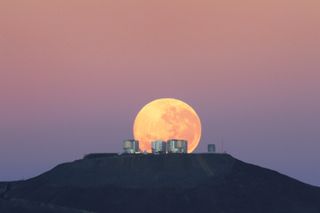
The dazzling full moon sets behind the Very Large Telescope in Chile's Atacama Desert in this photo released June 7, 2010 by the European Southern Observatory. The moon appears larger than normal due to an optical illusion of perspective. Full Story.
Nebula IC 2944 from the Very Large Telescope
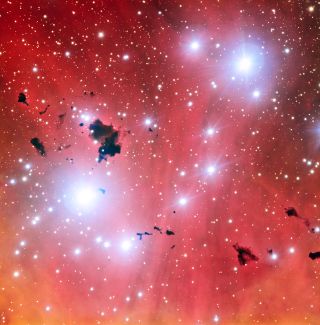
This stellar nursery shines 6,500 light-years from Earth. Image Released May 23, 2013.
15 Years of the Very Large Telescope
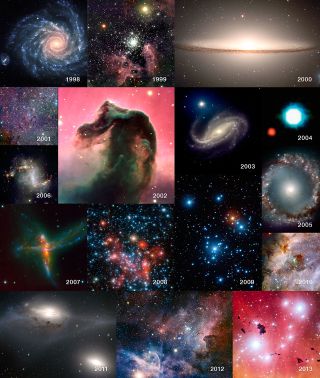
The Very Large Telescope saw first light on May 25, 1989. Image Released May 23, 2013.
Sunset at the Very Large Telescope Platform
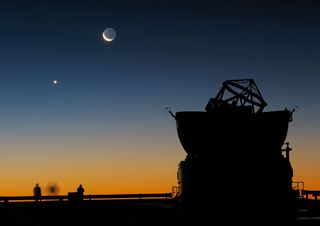
Astronomers enjoy the sunset at Paranal, on ESO's Very Large Telescope’s platform, just before beginning their nighttime observations. The moon and Venus shine bright, with the Auxiliary Telescope shown in silhouette.
Paranal Observatory and the Volcano Llullaillaco
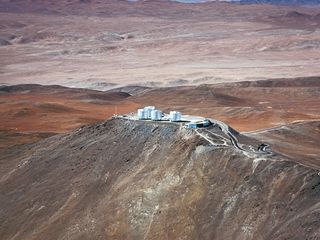
ESO's Very Large Telescope (VLT) at Paranal Observatory in northern Chile began operation on May 25, 1998. Here, we present photos of the four Unit Telescopes and some of the amazing images they have produced. This aerial photograph of the home of ESO's Very Large Telescope fully demonstrates the quality of the observing site.
Spiral Galaxy NGC 3521 - Constellation of Leo
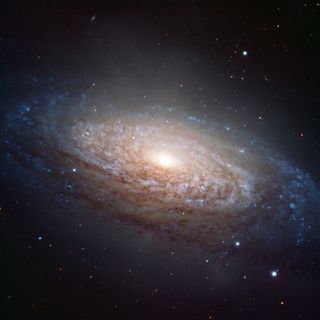
This picture of the nearby galaxy NGC 3521 was taken using the FORS1 instrument on the European Southern Observatory's Very Large Telescope at the Paranal Observatory in Chile. The large spiral galaxy lies in the constellation of Leo (The Lion), and is only 35 million light-years away.
Planet Earth Turns Slowly
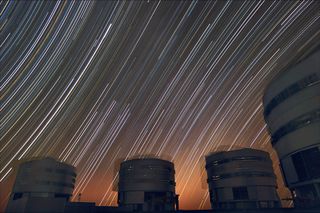
The sky appears to rotate above ESO's Very Large Telescope in this long exposure. The star trails curve away from the celestial equator in the middle of the photo, where the stars seem to move in a straight line.
Get the Space.com Newsletter
Breaking space news, the latest updates on rocket launches, skywatching events and more!
The Center of the Milky Way
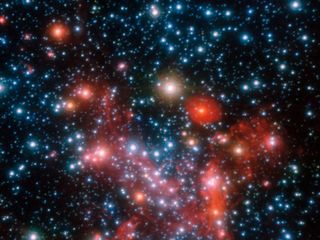
The central parts of our Galaxy, the Milky Way, as observed in the near-infrared with the NACO instrument on ESO's Very Large Telescope.
ESO's Very Large Telescope with Laser Beam
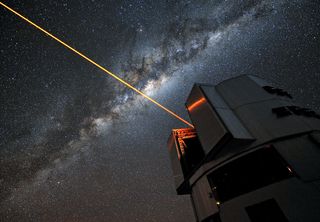
A glowing laser shines forth from the European Southern Observatory’s Very Large Telescope, creating an artificial star 90 km above the surface of the Earth used to fine-tune the telescope's optics.
Nebula Dominated by Cosmic Superbubble
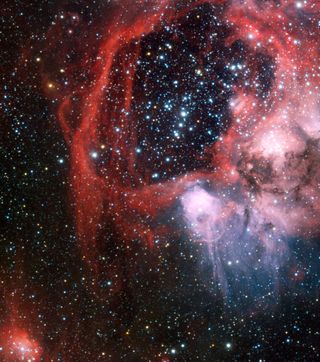
The European Southern Observatory's Very Large Telescope was used to obtain this view of the nebula LHA 120-N 44 surrounding the star cluster NGC 1929. Lying within the Large Magellanic Cloud, a satellite galaxy of our own Milky Way, this region of star formation features a colossal superbubble of material expanding outwards due to the influence of the cluster of young stars at its heart that sculpts the interstellar landscape and drives forward the nebula’s evolution.
Swirling Star Trails Over Yepun
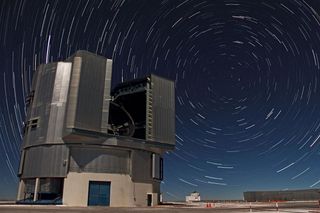
This view shows one of the Unit Telescopes of ESO’s Very Large Telescope (VLT) sitting beneath bright star trails circling the south celestial pole, a point in the sky that lies in the southern constellation of Octans (The Octant). Image released Jan. 7, 2013.
Join our Space Forums to keep talking space on the latest missions, night sky and more! And if you have a news tip, correction or comment, let us know at: community@space.com.










